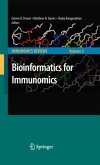Innate immunity is one the most evolutionally conserved systems, designed to protect the organism from viruses and bacterial infections, stress and many other types of attacks from the outside world. During the past decade, the capacity of molecular biology and information technology to produce and analyse data have grown exponentially, rapidly reforming many aspects of immunology research in the post-genomics era. As a result, scientific understanding of signalling networks governing the innate immunity response in human tissues and other organisms has evolved beyond recognition, compared to even just a decade ago. Many strategies have been designed over the years to identify novel proteins, which have a crucial role in innate immunity responses by regulating particular signalling pathways. These projects had many advantages, including the definition of novel drug targets, as exemplified by the recent success of anti-TNF therapy, as well as leading to a better, system-wide understanding of the molecular control of innate immunity. In the past few years, a new concept, Immunomics, has been adopted to define an emerging, multidisciplinary field of research (Schonbach, 2003). Although rapid progress has been made to identify the proteins playing pivotal roles in the innate immunity-related signalling pathways (for example, TIR signalling pathways), the catalogue of proteins with a key regulatory function identified and studied is far from completed. Novel proteins need to be char- terised to gain a more comprehensive picture of how signalling networks are regulated.








